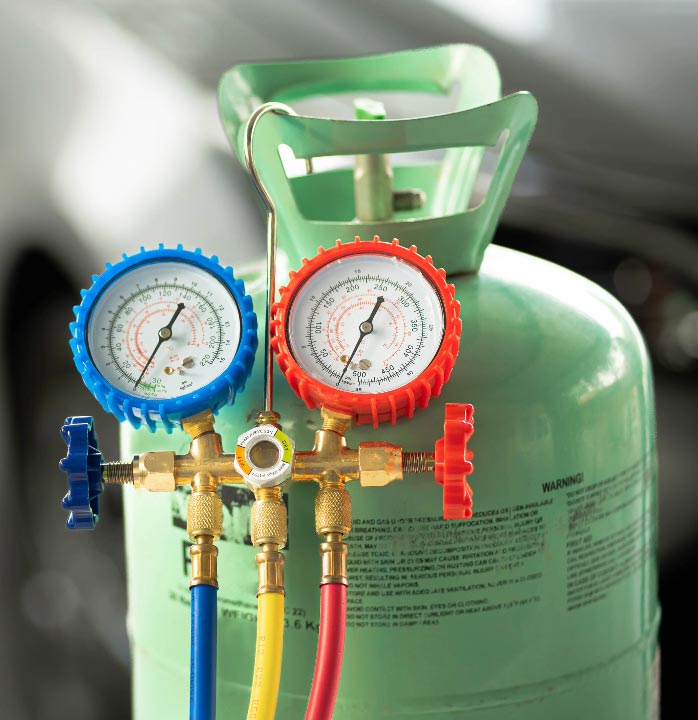The Montreal Protocol
In 2020, the EPA will be strictly enforcing a phase out of hyrdochlorofluorocarbons (HCFCs) to comply with provisions in the Montreal Protocol. There are 34 HCFCs subject to this phase out with R-22s being one of the most widely used.
Formally known as Montreal Protocol on Substances That Deplete the Ozone Layer, this international treaty is aimed to regulate the production, consumption and trade of chemicals that contribute to the damage of the earth’s ozone layer. Meant to address this serious environmental issue, the protocol and was agreed upon in 1987 but only came into full force in 1989. Through the years, the protocol has undergone several revisions to fully address the ozone depletion problem. Today, the treaty has been ratified by 197 parties which includes 196 states and the United Nations.
The Ozone Layer
You might be wondering why saving the ozone layer from depletion is of utmost importance. For a start, the earth’s ozone layer shields the earth from ultraviolet (UV) rays. Without the ozone layer, the amount of rays penetrating through the earth would make it impossible for most flora and fauna to survive. The earth would become uninhabitable.
If temperatures continue to rise incrementally because of ozone layer depletion, it will lead to the disruption of our natural ecosystems along with a variety of environmental problems. The food chain will likewise be affected because even the smallest living species could be eradicated. Ultimately, this will create an abnormal imbalance in food and sustenance. Thus, efforts to prevent the gaping hole in the ozone layer from further enlarging are being implemented.
How R-22s affect the Environment
Globally, there have been undertakings that had been done and are being done to reduce the use of harmful chemicals the world over. One of them is the total ban on R22s also known as HCFC22. In the past, it was widely used for a wide-range of cooling environments and were integral part of refrigerants, aerosol propellants and solvents. Most of us are familiar with its brand name Freon.
This ban is one of the important initiatives in the Montreal Protocol. The discontinuation of the manufacture and use of R22 refrigerants is due to the fact that they have been found to be toxic substances that have components which are adding to the depletion of the ozone layer. Although this type is no longer produced in North America, there are still a number of industrial users that continue to be in possession of the R22. And even though 98% of ozone depleting substances have been successfully obliterated, the work to fully eliminate R22 refrigerants is still far from over.
The depletion and modification of the ozone layer started as far back as the 70s. This has resulted in many adverse effects on the environment and ecology. R22s are considered harmful to the environment because it is considered a powerful greenhouse gas. These gases possess considerable heat that can be trapped into the atmosphere leading to a warmer climate.
How R22s affect Health & Safety
Health and safety issues have also cropped up with the R22s. Although it is not flammable, not explosive and not corrosive, these refrigerants are not entirely harmless. Regular inhalation of R22 in high concentration can lead to breathing problems, fluid build-up in lungs, cardiac arrhythmia, organ damage or even sudden death. In the long run, its toxic effects on the human body may lead to skin cancer, eye inflammation which can ultimately lead
to blindness, cataracts, erythema, and other debilitating skin diseases. Although limited exposure is only mildly harmful, it can still cause health problems like dizziness or suffocation, irritation of the nose and throat, drowsiness and sometimes, it even leads to loss of consciousness. Acute exposure may lead to disorientation, incoordination, narcosis, nausea, vomiting, heart palpitations, tightness in the chest, and difficulty in breathing. Chronic exposure, on the other hand, may cause an irregular heartbeat. In rare instances, ingestion may happen and this can bring about gastrointestinal tract discomfort. There have also been reported cases of refrigerant poisoning.
These refrigerants also prove to be hazardous to animals. Exposure to small doses has inconsequential effects but longer and stronger exposure lead to depression of the central nervous system, cardiac arrhythmia and asphyxiation.
Refrigerant Services LLC have a variety of programs that can help you transition from these harmful refrigerants to more environmentally friendly ones. Call us at 844-PUREFC (787-3232) or fill out our online contact form to find out more about the services that we offer.





